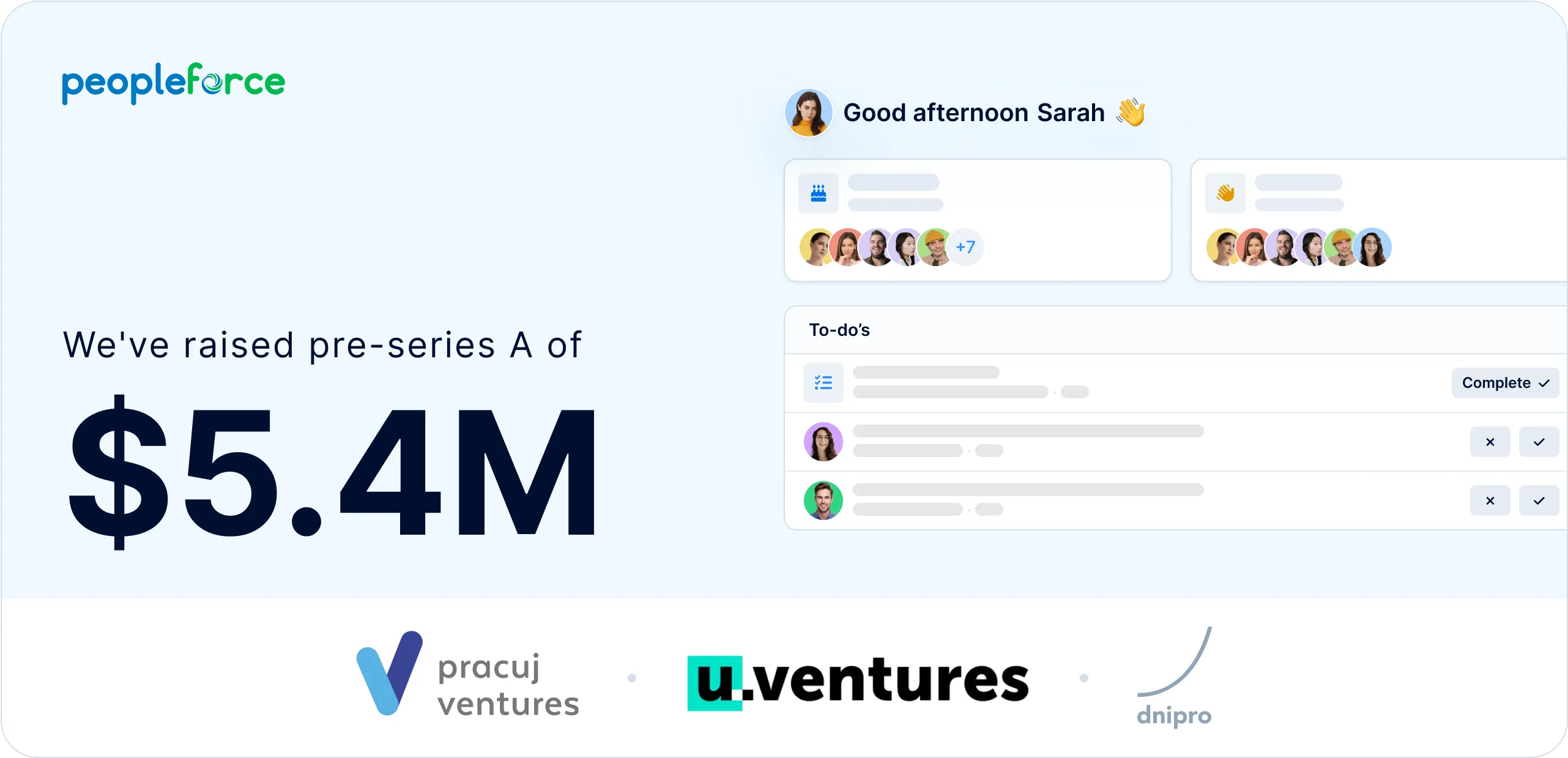Articles
PeopleForce raises $5.4M in Pre-Series A to accelerate growth across Poland and Latin America
New funding will help accelerate PeopleForce’s expansion and further its mission to revolutionize HR processes globally.
Mastering Individual Development Plans: a complete guide for HR managers
A comprehensive guide to creating and managing Individual Development Plans, helping HR managers effectively develop talent, boost employee motivation, and achieve business goals.
Transforming HR success and strategy at AWT Bavaria with PeopleForce
Discover how AWT Bavaria transforms HR with PeopleForce, streamlining recruitment, onboarding, and growth for a smarter, people-first workplace.
50 must-have HR resources for 2025: books, podcasts, and more
Stay ahead in HR with these 50 essential resources for 2025 – books, podcasts, and tools to keep you informed and inspired.
What shapes the near future of HR? All about HR trends for 2025
Discussing the latest industry trends together with the top European HR experts.
10 essential HR solutions for common startup challenges
Discover the top 10 HR challenges startups face and practical solutions to overcome them so your startup can thrive and grow efficiently.
Inclusion in the Workplace: Why Inclusive Workplaces Foster Happier and More Productive Teams
Inclusive workplaces boost engagement and performance. Discover strategies to build a culture where everyone thrives and top talent stays.
Diversity in the Workplace: A Necessity, Not a Trend – 5 Strategies to Transform Your Company’s Culture
Unlock the power of diversity. These 5 culture-shifting strategies help you build a more innovative, profitable, and inclusive workplace.
PeopleForce Wrapped 2024 awaits: Our top-10 pick of the year
We’re excited to share our top 10 most useful features of the year
Why and how to conduct an HR audit as an SMB
As a small or mid-sized business (SMB), conducting an HR audit is essential for ensuring that your HR practices are efficient, compliant, and aligned with your business goals.
10 recruitment tasks you can automate with PeopleForce
Recruitment requires strategy, and the right software makes it easier. PeopleForce’s ATS, pipeline management, and bulk actions simplify workflows and save recruiters time.
See how PeopleForce can help your company.

